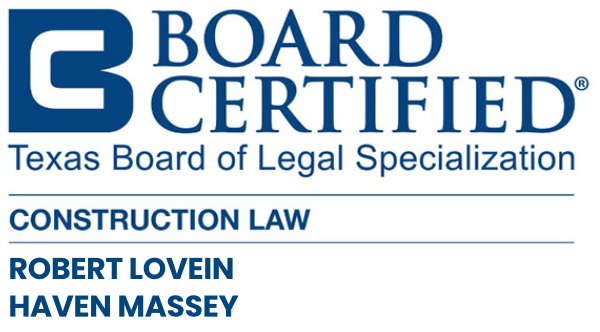Understanding and negotiating the terms of a physician employment agreement is critical to the newly formed employment relationship, in that the agreement will define the rights and responsibilities of the parties for the entire term of the employment relationship. Some physicians are hesitant to negotiate and suggest modifications to the agreement. However, like most all contracts, the terms of a physician employment agreement can and should be negotiated in a manner that is fair to both parties. Neither the practice group nor the physician employee will ultimately benefit from a one-sided agreement that unfairly restricts just one party. With that said, not all provisions of the agreement will need to be negotiated, but instead the parties should focus on the critical provisions that will substantially impact them during and after the employment relationship.
Lovein Ribman’s health care attorneys are well versed in all types of physician employment agreements and routinely assist all types of physician groups, physicians, nurses, dentists, and medical practitioners understand and negotiate a fair employment agreement. If you are in the process of hiring a new physician or have been offered a position, please call us at (888) 362-2483 for a free no-obligation consultation.
The Employment Agreement
The typical physician employment agreement will contain provisions that outline the term of the employment relationship, compensation, ownership and/or partnership, job requirements, call coverage, professional liability insurance, medical benefits, PTO, CME, outside activities, termination, restrictive covenants, and dispute resolution. Some of these provisions will be self-explanatory, while other provisions will contain legalese and require the assistance of a qualified health care attorney to explain and negotiate. Below is a brief discussion of the more critical provisions contained in a typical physician employment agreement and how they can be negotiated to be more fair and equitable for both parties.
The Term of Employment
Employment contracts should specifically state the start date and end date of the employment relationship. Unlike most Texas employees who are employed “at-will” (meaning the employer can terminate the relationship at any time during the employment relationship without cause), most physician employment agreements are for a term of one or two years, with automatic renewal at the end of the term, unless one party exercises the right to terminate the agreement within 60-90 days before the end of the term.
Benefits
The physician employment agreement should address the nature and type of benefits the group will offer the physician employee during the term of employment. Typical benefits include paid time off (PTO), including vacation and sick leave; medical, dental, and vision insurance; malpractice insurance, professional membership dues, continuing medical education (CME), and retirement plans. PTO typically includes vacation and sick pay and for a new physician employee ranges from 2-3 weeks. The group may offer to pay the physician employee’s personal medical insurance, but not the remaining members of the physician’s family. The medical group will typically offer to pay the physician employee’s malpractice insurance, but the physician may be responsible for paying the tail insurance as an endorsement to the primary policy (discussed in more detail below). It is common for the group to pay anywhere from $1,500-$3,000 toward the physician employee’s CME, in that continuing education is a requirement to maintain the physician’s license and benefits both the group and the physician employee. Other benefit incentives can include repayment of student loans, signing bonus, and relocation expenses. The nature and type of benefits are typically negotiated and part of the overall compensation package.
Outside Activities
The employment agreement should address whether the physician is allowed to participate in outside activities, such as working outside the practice, researching, publishing articles, teaching, and/or consulting, and whether the income earned from these activities, if any, belongs to the group, the physician, or will be shared equally. The employment agreement may also address who will own any inventions and/or patents the physician discovers while employed by the group, which are typically assigned to the group. Again, the type of outside activities and compensation for performing the activities are typically negotiated during the offer and acceptance stage of employment.
Restrictive Covenants
Restrictive covenants, typically referred to as “non-compete” and “non-solicitation” provisions, have become common in physician employment agreements. A “non-compete” provision restricts the departing physician from working within a specific geographical radius from the former practice for a specific amount of time following termination of the employment relationship. In contrast, a “non-solicitation” provision prohibits the departing physician from actively seeking to attract the practice’s patients, employees, and health plan contracts away from the practice upon termination of the employment relationship.
In Texas, both non-compete and non-solicitation provisions are enforceable if they are reasonable and only seek to protect the former practice’s legitimate business interest. Section 15.50 of the Texas Business and Commerce Code sets forth the requirements for an enforceable non-compete provision. Specifically, Section 15.50 requires the non-compete provision to be limited in time, geographical area, and scope of the activities to be restrained, in a manner such that it does not impose a greater restraint than is necessary to protect the goodwill and other business interests of the former practice. Generally, a provision that limits the departing physician from engaging in a similar type practice (or procedure) within 10-30 miles of the former practice for a period of 1-2 years has been held to comply with Section 15.50. In addition, to be enforceable, the restrictive covenant must: (1) not deny the physician access to a list of patients the physician saw or treated within one year of termination of the employment contract; (2) provide the physician with access to all medical records for patients the physician treated and an opportunity to copy the records for a reasonable fee, upon authorization by the patients; (3) provide access to the physician’s patient list in the same format maintained by the employer, unless agreed to otherwise; (4) provide that the physician will not be prohibited from providing continued treatment to a specific patient during the course of an acute illness even after the employment contract has been terminated; and (5) provides the departing physician with an option to buyout the covenant for a reasonable price, typically an amount equal to the profits the former practice will lose as a result of the competition. If the non-compete provision does not contain the aforementioned restrictions, then it is unenforceable. A physician should seek legal advice and counsel before agreeing to a restrictive covenant, in that it can substantially limit the physician’s ability to seek employment in a similar type of practice upon separation of the employment relationship.
Professional Liability Insurance
Both the employer and the physician employee are liable to a patient, and/or family member, for the physician employee’s negligent acts and/or omissions that occur while treating a patient. As such, both parties have a mutual interest in obtaining professional liability insurance that will cover them for the physician employee’s negligence. Common practice is for the employer to pay for the insurance while the physician is employed by the group. For negotiation purposes, both the employer and physician employee should be concerned with the following: (1) the type of insurance purchased, i.e., whether the policy is “occurrence-based” or “claims-made”; (2) the amount of coverage and/or the “policy limits” and the deductible; and (3) whether the policy will cover the physician employee after he/she leaves the practice for negligent acts/omissions that occurred while employed by the group, known as “tail insurance”. A discussion of these important issues is set forth below.
There are two common types of malpractice insurance: (1) an occurrence-based policy and (2) a claims-made policy. The difference between the two types of policies is important and worth understanding. An occurrence-based policy covers the employer group and the physician employee for negligent acts and/or omissions that “occur” during the policy period, regardless as to when the claimant brings the claim. By way of example, assume that an occurrence-based policy is purchased for a twelve-month period. In month six of the policy, the physician employee commits malpractice, but the patient waits to bring the claim sometime after the twelve-month policy period ends, but within the statute of limitations period (by the way this is not uncommon). Since the event of malpractice “occurred” during the twelve-month policy period, the claim would be covered under this policy, even if a new policy had been purchased and was in place at the time the claim was made. Arguably, an occurrence-based policy is superior to that of a claims-made policy because even if a subsequent policy is not purchased, the insurer is still required to defend and indemnify against any covered claim that occurred during the policy period, which is not the case with a claims-made policy. As such, occurrence-based policies are typically more expensive and are not as common as a claims-made policy for malpractice insurance.
In contrast, a claims-made policy is not trigged by the date of the malpractice event or occurrence, but instead is trigged on the date the claim is made. By way of example, let’s assume that in the first six months of employment the physician employee commits malpractice and that at that time, a twelve-month claims-made policy is in place with USA Insurance. However, at the expiration of the USA Insurance policy, the employer purchases a new claims-made policy from American Insurance. Six months into the American Insurance policy, the patient presents a malpractice claim for the act that occurred during the first six months of the USA Insurance policy period. What policy would cover the claim? The subsequent American Insurance policy because it was in effect at the time the “claim was made”, even though the act occurred while the USA Insurance policy was in effect. Now assume that a subsequent policy was not purchased by the employer or assume the employee-physician is no longer employed by the group when the claim is made for the event that occurred during the first six months of employment while the claims-made policy with USA Insurance was in place. Under this scenario, there would not be any insurance coverage because the claim was made at a point in time when a policy was not in place, even though the event occurred when the USA Insurance policy was in effect. One way to prevent this situation, is to purchase what is known as “tail insurance”. Tail insurance is an endorsement to the original policy and covers the employee physician for events of malpractice that occurred while employed by the group. The cost of the tail insurance will depend upon how long the policy will remain in effect after the physician employee leaves the employer group, typically anywhere from one-eight years. With the above said, the employment agreement should address: (1) who will pay for the tail insurance; and (2) how long it will remain in effect after the employee physician leaves the group. A typical way to address this issue, is to require the employer to pay for tail insurance if the employee is terminated “without cause”. In contrast, if the employee physician is terminated “for cause” or voluntarily leaves the practice, then the employee physician would be responsible for paying the tail insurance premium.
Termination
The typical physician employment agreement will contain provisions regarding termination of the employment relationship prior to the end of the employment term. Termination can be “for cause” or “without cause”. Typically, only the employer group will have the right to terminate the employment relationship “for cause” upon the happening of a serious event like loss of a medical license, malpractice, loss of medical staff privileges, a felony conviction, use of drugs or abuse of a controlled substance, or a violation of a material provision of the employment agreement or the group’s policies and procedures. For minor violations, the employment agreement should contain a notice and cure provision, which affords the employee physician an opportunity to cure the violation before the employer group has the right to terminate the employment relationship; typically, anywhere from 10-30 days. In contrast, both parties should have the right to terminate the employment relationship “without cause”, meaning for no stated reason, upon providing 60-90 days-notice to the other party. This is an important provision because the parties do not necessarily know whether the employment relationship will be a good fit until they begin working together and either party may want to exit the employment relationship prior to the term of the agreement and go their separate ways.
The employment agreement may also be terminated upon the death or disability of the physician employee. “Disability” will typically be defined as the inability to perform the essential functions of the employee’s position for a negotiated period of 60-180 days, commonly referred to as the “qualifying period”. During the qualifying period, the agreement may require the group to continue paying the physician employee’s salary. If it does not, then the employee physician should purchase disability insurance to cover a portion of his/her salary during the qualifying period.
Again, the above discussion includes just some of the essential provisions of a well drafted physician employment agreement.
















